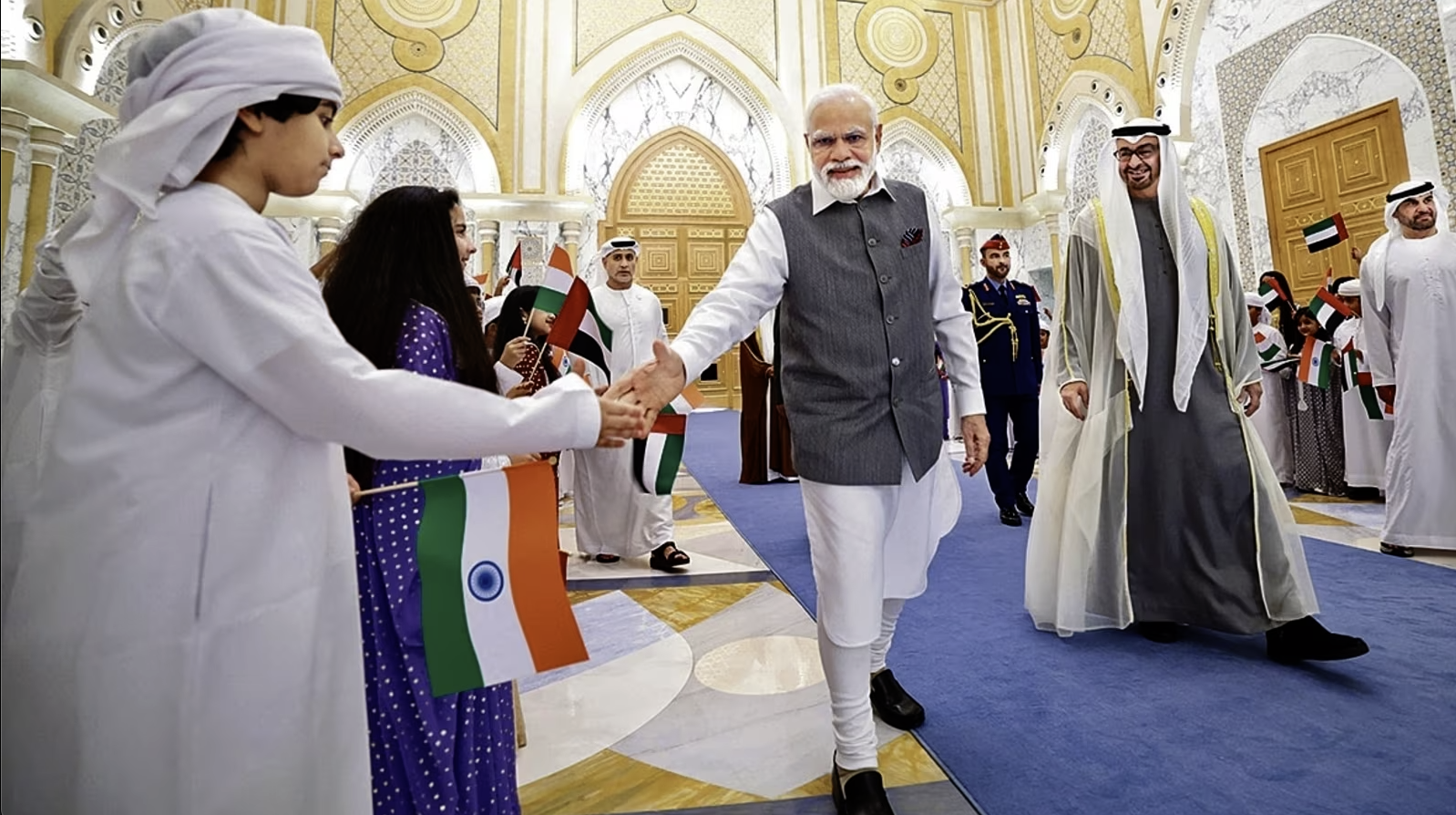In a landmark move, India and the United Arab Emirates (UAE) have signed agreements to settle trade in their national currencies, marking a significant shift in their economic relationship. This development, which took place during Indian Prime Minister Narendra Modi’s visit to Abu Dhabi, is set to bolster cooperation in areas such as trade, energy, and climate action.
Prime Minister Modi’s meeting with Zayed Al Nahyan, the Crown Prince of Abu Dhabi, was a significant event that underscored the strengthening ties between the two nations. The visit also saw the signing of a memorandum of understanding (MoU) to establish a campus of the Indian Institute of Technology (IIT)-Delhi in Abu Dhabi, further cementing the educational collaboration between the two countries.
The UAE holds a special place in India’s strategic outreach to West Asian states, with trade and security being key areas of engagement. The Emirates is home to 3.5 million Indian expatriates, who make up about 30% of the country’s population. The signing of the Comprehensive Economic Partnership Agreement (CEPA) in February 2022 has given a significant boost to bilateral trade.
The agreements signed during Modi’s visit include two MoUs between the Reserve Bank of India (RBI) and the Central Bank of UAE. These MoUs aim to establish a framework for using national currencies for cross-border transactions and cooperation in interlinking payment and messaging systems.
The MoU on using national currencies will establish a Local Currency Settlement System (LCSS) to promote the use of the rupee and dirham. This agreement covers all current account transactions and permitted capital account transactions. The LCSS will enable exporters and importers to pay in their respective domestic currencies and facilitate the development of an INR-AED foreign exchange market.
This arrangement is expected to boost investments and remittances between the two sides, according to the RBI. The use of local currencies will reduce transaction costs and settlement time, including for remittances by Indians in the UAE. This mechanism could also be used by India to pay for imports of oil and other commodities from the UAE, its fourth-largest energy supplier.
Under the second MOU, the two central banks will cooperate on linking India’s Unified Payments Interface (UPI) with the UAE’s Instant Payment Platform (IPP) and RuPay switch and UAESWITCH. This link will enable users in both countries to make fast, safe, and cost-effective cross-border transfers.
Bilateral trade between India and the UAE was worth $84.5 billion in 2022-23. The UAE, which imports most of its food requirements, has pledged $2 billion to develop a series of food parks in India. The two sides have also agreed to increase non-petroleum trade to $100 billion by 2030.
In conclusion, these agreements mark a significant milestone in the economic relationship between India and the UAE. They pave the way for increased strategic economic convergence and open up new pathways for structuring similar arrangements with other countries in the region and beyond.



